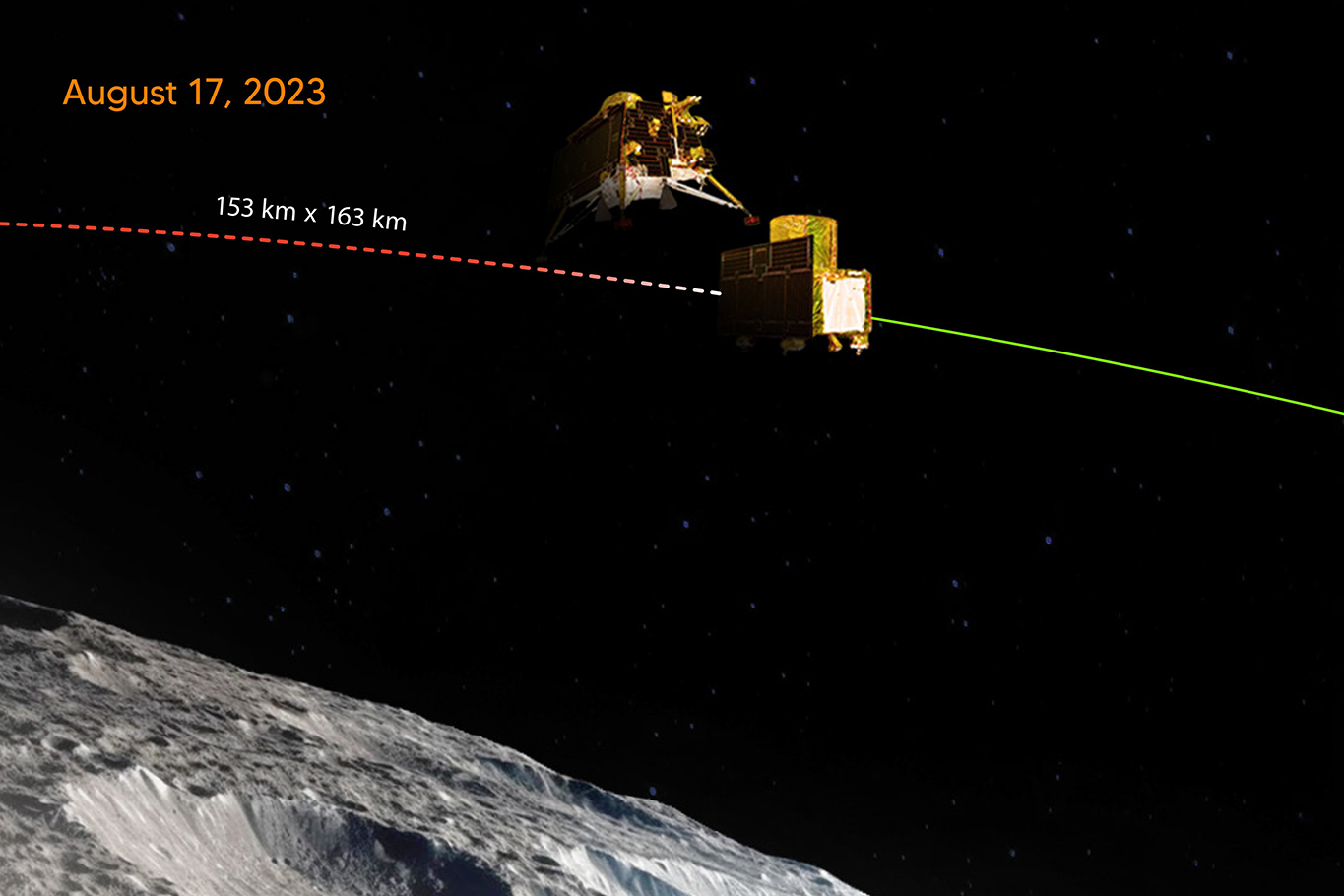 The stage is prepared for the Chandrayaan-3 spacecraft’s Vikram lander to separate from the main propulsion module, marking the commencement of its final lunar landing phase. Chandrayaan-3 completed its last moon-directed maneuver on Wednesday, drawing it closer to the lunar surface. Scheduled for August 23, the lander and rover, named Pragyaan, are poised to land on the Moon.
The stage is prepared for the Chandrayaan-3 spacecraft’s Vikram lander to separate from the main propulsion module, marking the commencement of its final lunar landing phase. Chandrayaan-3 completed its last moon-directed maneuver on Wednesday, drawing it closer to the lunar surface. Scheduled for August 23, the lander and rover, named Pragyaan, are poised to land on the Moon.
ISRO stated that the successful firing maneuver placed Chandrayaan-3 into a designated orbit of 153 km x 163 km. Having accomplished the lunar-bound maneuvers, the Propulsion Module and Lander Module are now poised for independent journeys.
After detachment from the Propulsion Module, the lander will undergo a “deboost” process to slow down, positioning it in an orbit where the Perilune (closest point to the Moon) is 30 kilometers and Apolune (farthest point from the Moon) is 100 kilometers. This orbit setup aims for a soft landing attempt in the Moon’s south polar region on August 23.
The landing’s critical aspect involves transitioning the lander’s velocity from a 30 km height to the final landing phase, requiring the spacecraft to shift from horizontal to vertical orientation, as per ISRO Chairman S Somanath.
A successful Chandrayaan-3 mission will mark India as the fourth nation—after the USA, Russia, and China—to achieve lunar surface landing.
The spacecraft would have covered a journey of 300,000 km before its planned moon landing on August 23-24, with potential adjustments based on lunar sunrise. Should the need arise, ISRO is prepared to reschedule the landing for September.
Following landing, the spacecraft will utilize its onboard scientific instruments to explore the lunar surface for one lunar day, approximately equivalent to 14 Earth days.












